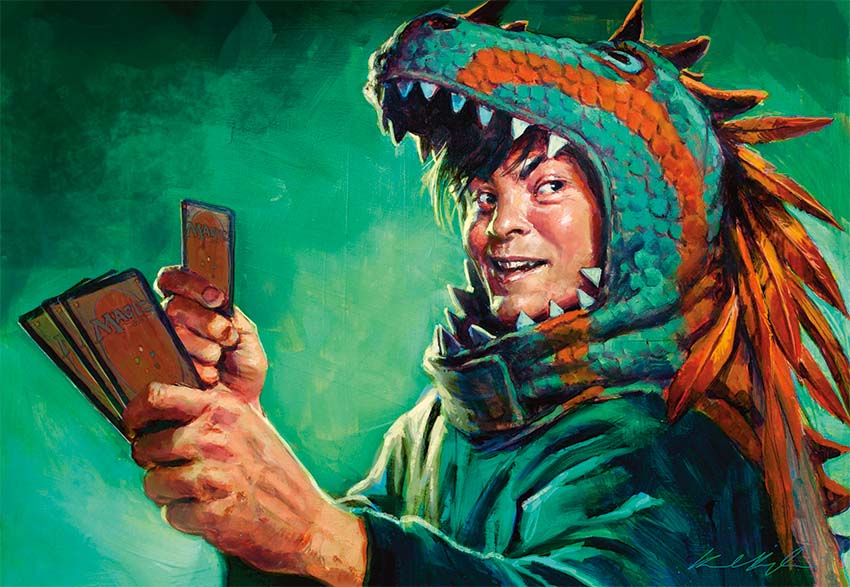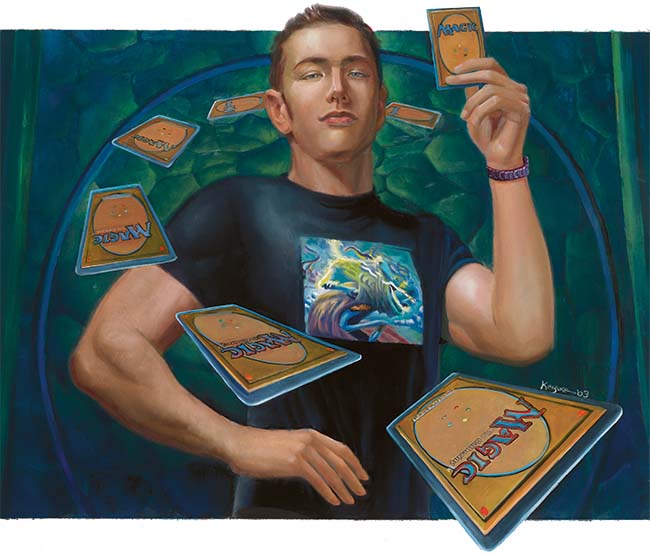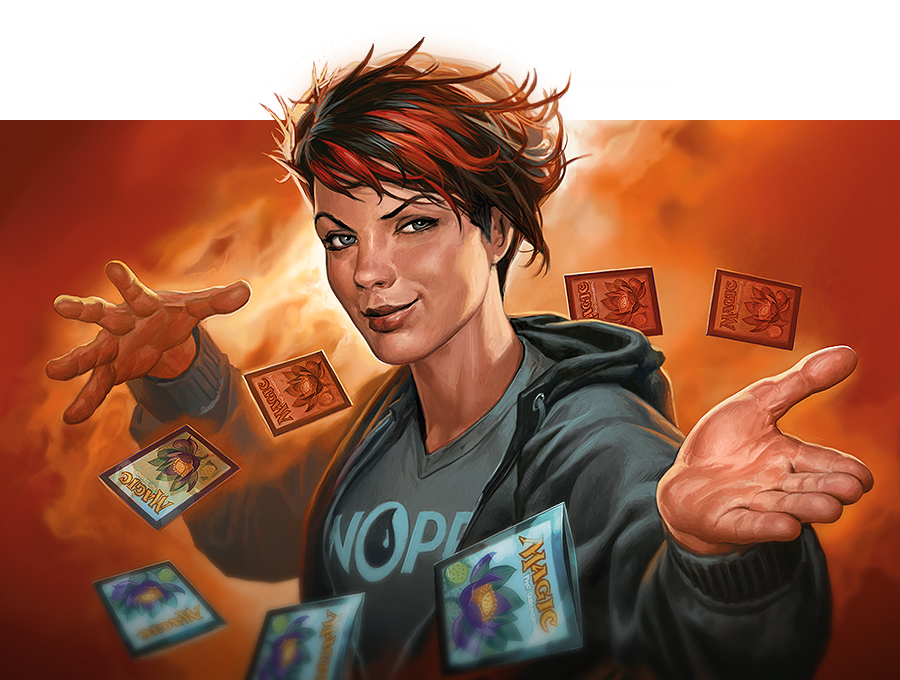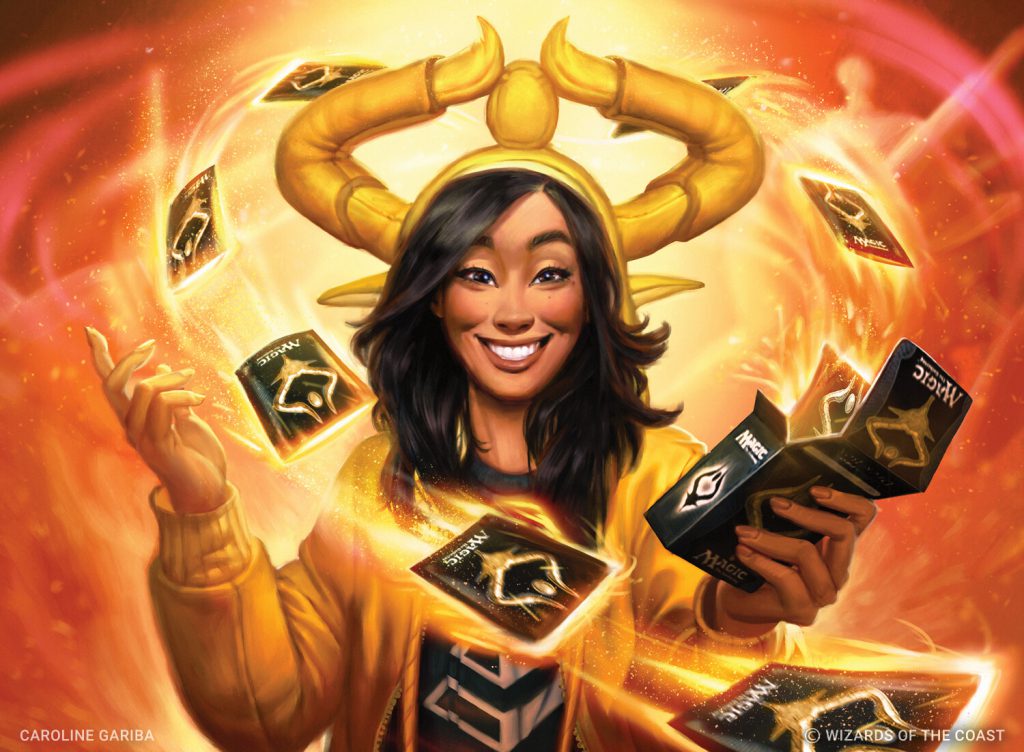Casual and Competitive. Two terms you hear bandied about a lot in the context of Warhammer and other tabletop wargames, usually to denote a certain style of player or play. For as long as Warhammer has been played, there’s been an ongoing discussion about these groups and the supposed clash between them, with players often claiming that one group is “ruining the game,” or that a group gets an outsized amount of support from Games Workshop. There’s no amount of love lost between people who self-identify in a particular group, with casual players claiming that competitive players put winning over everything else, leading to miserable, boring play experiences, and competitive players saying they’d prefer tighter, balanced rulesets and symmetrical play.
At Goonhammer we’ve always hated this debate. First off, no one has clearly defined what “competitive” and “casual” mean in these contexts, and it’s clear from looking at online arguments that groups will use the name of the other group to mark “anyone I do not like to play against.” Can casual players play in events? Can competitive players play casual games? How does the hobby aspect factor in? Are there competitive players who are great painters, and casual players who don’t enjoy painting minis? What about narrative? Is naming your units and creating a backstory for them the exclusive purview of one group?
Ultimately it doesn’t really matter how or where the boundary lines are in this debate because this is a false distinction. The idea that someone has to be exclusively either a competitive or casual player is absurd – of course competitive players can paint well and build narratives and play casual games with friends over beer and pretzels. And likewise more casual players can attend a GT or RTT or try to win their games. What matters more is why they play – what drives them, what are they looking to get out of a game, and how does that translate to how they interact with the hobby and the other players in it.
In this three-part series of articles, we’re going to get to the heart of this issue – our goal is to build a framework to understand player motivations in tabletop wargaming and how those translate to play and goals. Our hope is that this framework will build a better understanding of the types of players out there and in turn improve the quality of discussion around player interactions. By the time this series is over, we believe we’ll have a better set of tools for creating events which appeal to different player groups, and a better set of questions to ask when talking to other players to ensure you have the kind of experience you’re looking for.
So join us in this three-part series as we dive into building the framework for understanding and cataloging player motivations and how to classify players as a result. In this first article we’re going to talk about player psychographics, starting with the most famous example in use today, and how we can use that example as the starting point to build our own understanding of the Warhammer player base.
The Psychographics of Magic: the Gathering
Let’s start with the quick intro for people not in the know: First published in 1993, Magic: the Gathering is a Collectible Card Game (CCG), and in fact, is the grandfather of all collectible card games, as both the originator of the concept and, at various points over the last 30 years, the most famous CCG on the planet. Over the last 30 years there have been tens of thousands of distinct Magic cards published, and there are dozens of popular formats for playing the game, both competitive and casual. From the rotating format of Standard to the game’s most popular format, Commander, no matter how you want to engage with Magic, there’s likely a format which will appeal to you.
To help better understand their players and design better cards, sets, and products, Wizards of the Coast created a set of player psychographics. In market research, psychographics is a qualitative methodology in which consumers are studied and grouped based on psychological traits – things like their motivations, values, personalities, and interests. In Magic, players are divided into three major psychographic groups based on what motivates them to play and the kinds of cards they like. These groups are Timmy/Tammy, Johnny/Jenny, and Spike.
It’s worth diving into these individually but before we do that these groups aren’t mutually exclusive. It is very likely and common for a player to fall into two or more categories, or have tendencies from each.
Note: Before we get into this – almost all of this information about player psychographics for Magic: the Gathering comes from work published by Mark Rosewater and Matt Cavotta. For a full list of cited articles with links, check out the “Sources” section at the end of the article. These are worth your time to read in full!

Meet Timmy/Tammy
Timmy/Tammy plays the game to experience something. This includes power gamers who want to play big creatures and spells and smash their way to victory – these players equate power with fun and they want to win big, not eke out close wins in tough games. It also includes social gamers who thrive on the social aspects of the game, building decks to maximize fun interactions – they’re looking for a social experience. Diversity gamers are another subgroup here – players who want to experience new game modes, cards, decks, and ways to play. And you’ve also got Adrenaline gamers in this group, who are in it for wild and unpredictable moments and outcomes – the chaos players who look for ways to make every game as different as possible and will take wild chances just in case it can make something cool happen.
Note: Timmy/Tammy are more about experiencing something than proving something when they play. For this reason, the Magic psychographic model would classify griefers – “players who enjoy making other players not have fun” – into the Timmy/Tammy group rather than Spike. In this case it’s again about what motivates a player, and not the outcome – Spike will play land destruction if that’s a powerful deck and doing so helps them demonstrate mastery over the metagame, but it’s a means to an end in that case, while a griefer will play land destruction for the experience of dominating opponents and preventing them from doing anything in a game – the power trip. Spike may not care if you’re having fun in the game but they aren’t by definition specifically trying to prevent you from having fun, either.
This is an important thing to note because it can be tempting to assume that Timmy/Tammy players are your “casual, just-here-for-a-good-time” crew but that’s very much not always the case for a few reasons. The first is that players can fall into multiple groups and tendencies, as we mentioned above. The second is that Timmy/Tammy players can also be after winning, and can also encompass some of the people generally thought of as unfun in the player community because of the types of experience they’re after.

Meet Johnny/Jenny
Johnny/Jenny plays the game to express something. These players want to express themselves through their deckbuilding and play styles. From combo players looking for crazy and fun interactions with cards to deck artists who want to embody a specific theme or concept into their decks to players out to prove that a card everyone agrees is awful actually can, in some circumstances, be used to win games. Some players in this group are Offbeat Designers, who want to come up with strange deck concepts no one has ever tried, exploring angles that other players wouldn’t even consider, like decks with all lands. Or no lands. Or without spells. Being a Johnny/Jenny isn’t restricted to just deckbuilding, but that’s the most obvious place their ability to express themselves comes out in Magic.

Meet Spike
Spike plays the game to prove something. And usually what they’re trying to prove is how good they are at the game. For Spike, the game is a challenge or puzzle to be solved, and by doing so they can demonstrate their ability. Spikes get the most joy out of winning because the game is in many ways just a vehicle for showing what they’re capable of.
As with Timmy/Tammy and Johnny/Jenny, Spikes come in a variety of flavors based on how they want to prove their ability – Innovators often have Johnny/Jenny sensibilities, in that their focus is on understanding how the game works at its core and demonstrating that mastery by being the first to come up with new decks, tactics, and advancements in play concepts. Tuners on the other hand aren’t trying to innovate, but rather fine-tune known decks, working to optimize successful concepts and refine them into something more efficient. Analysts instead focus on the metagame, looking for counterplays and finding ways to play against the field. And the Nuts & Bolts Spike is focused primarily on improving their own gameplay and playing flawlessly over deckbuilding – these players tend to focus more on Limited.
It’s worth noting that Spikes aren’t necessarily good at the game nor are they necessarily playing in tournaments; Spikes may play casually or be really bad at the game. As with Timmy/Tammy, being a Spike is about why you play, not how well you play.
Mixing Things Up
Something important to note here is that these groups are NOT mutually exclusive. In fact, most, if not all players will have tendencies toward two categories, and possibly all three. Timmy/Tammy + Johnny/Jenny for example are the types of players who may build specifically for oddball play formats, or make up formats of their own. Timmy/Tammy + Spike players want to win, but have fun doing it, and will look for viable decks which include the kinds of cards they want to play. Johnny/Jenny + Spike players want to win, but with style – they’re likely to be rogue deck builders trying new, more “out there” concepts in tournaments to show it can be done.
The Two Other Types
In addition to these player profiles, there are two other profiles Wizards of the Coast identified, though these are based more around aesthetics than play. That is, these are based on “how players can find beauty in the game.”
Mel (Melvin/Melanie)
In Magic, Mel are players who appreciate the game’s Mechanics, both in terms of appreciation for interesting mechanics and card designs and also in terms of mechanic/design interactions that just “feel” right – a good example here might be Offering to Asha, which costs four mana, counters target spell unless the caster pays (4), and gives you four life. Here the combination of four mana and four life for a cost of four is aesthetically pleasing to the Mel player.

Vorthos
A term originally coined by Matt Cavotta, Vorthos players find beauty in the lore. They’re the nerds who read the Magic backstory and they appreciate cards and mechanics which derive flavor from the game’s lore. They really enjoy cards with cool ties to the lore and flavor of the game. These are the players who really appreciate top-down designs and resonance. While the other player types have been largely discussed and defined by Mark Rosewater, Magic’s lead designer, the Vorthos type can encompass everything from cosplayers to avid readers of the game’s tie-in novels and unlike the other groups may include fans who don’t actually play the game. There’s a clear connection here to wargames (particularly Warhammer) with Vorthos which we’ll explore in our next article.
A Mel/Vorthos combo is a player who really enjoys it when the mechanics model an aspect of the lore or tie into the lore in interesting or clever ways.
From the original article by Matt Cavotta:
Matt Cavotta: Vorthos is the guy who started collecting cards because he liked the art, then read some Magic novels, then saw his favorite characters appear on some cards and decided to learn to play. There are a lot of Vorthoses out there. Some collect cards, but might not even play. Some have a hoot getting artists to sign their cards. Some don’t read flavor text ’til after they finish the novel in case it might spoil the ending. Vorthos understands that Magic can be fun even when you’re not playing the game.
Casual and Competitive Aren’t Motivations
So how can we apply this to Warhammer? Well, we can start by noticing that these player psychographics have little to do with competitive play or casual play or playing to win or playing for fun – instead they’re much more concerned with how players have fun when they play and why they play to begin with. That’s really helpful, because it immediately showcases the problem with trying to divide players into “casual” and “competitive”: Mainly that these types don’t really tell us anything about why players in that group are playing or what they’re trying to get out of it. Simply saying that casual players “are playing for fun” misses the point – competitive players are also playing for fun, but as we saw in our Magic profiles, different players find different things to be fun.
In that sense, there’s a lot we can bring into the discussion of player types in wargaming. We can look at player motivations around expression, challenge, and experiences to better understand why players play and what keeps them coming back. Indeed, even the categories laid out for Magic are helpful – we can clearly see aspects of these psychographics in Warhammer. For example, just as there are Timmies/Tammies in Magic, these players are also in Warhammer, who want to win big and smash their opponents using big, splashy units and effects. Everyone you know who wanted to bring a Warhound, Astreus, or T’aunar to a game likely falls into this category. Spikes are also clearly a Warhammer group, the players who will play the best army/list, and who are after the thrill of competition. And while there aren’t really “combo” armies in Warhammer, they certainly exist in other wargames and there are some aspects of Johnny which map to wargamers.
Likewise, the Mel and Vorthos categories are very helpful here as well – they help us define groups outside of the play side of things and understand that those are possible and valuable. While I don’t think Warhammer will have a Mel – or at least, I think that Mels in Wargaming are a lot less common – wargames will have an aspect that Magic doesn’t – specifically painting and modeling. Any kind of player psychographics we do should necessarily look at players along these lines as well.
Next Time: Translating This to Wargaming
This is a great jumping off point for our next article – tomorrow we’ll look to build a methodology for how we can understand and segment our own player base to the same degree. We’ll talk about how the Magic psychographic profiles were built and how we can build our own, the methodology behind that experiment design, and what we’ll hope to get out of it. So stay tuned for that article tomorrow.
Sources
Almost everything here on Magic Player Psychographics comes from articles written by Mark Rosewater on the DailyMTG website. I’ve linked them here, save Cavotta’s article, which appears to no longer be available online. That said, you can find relevant excerpts from it in Rosewater’s articles.
- Mark Rosewater, Timmy, Johnny, and Spike, 2013 https://magic.wizards.com/en/news/making-magic/timmy-johnny-and-spike-2013-12-03
- Mark Rosewater, Timmy, Johnny, and Spike Revisited, 2006 https://magic.wizards.com/en/news/making-magic/timmy-johnny-and-spike-revisited-2006-12-18
- Mark Rosewater, Vorthos and Mel, 2015 https://magic.wizards.com/en/news/making-magic/vorthos-and-mel-2015-08-31
- Ant Tessitore, Vorthos 2015, 2015 https://www.coolstuffinc.com/a/anttessitore-042215-vorthos-2015/
- Matt Cavotta, Snack Time with Vorthos, 2005
If you have any questions or comments feel free to drop us a note in the Comments below or email us at contact@goonhammer.com. And if you want regular updates in your inbox, subscribe to our newsletter.



You must be logged in to post a comment.